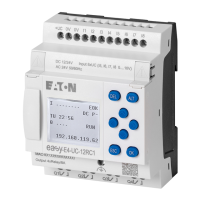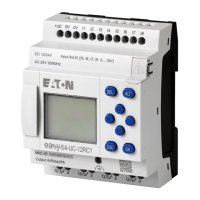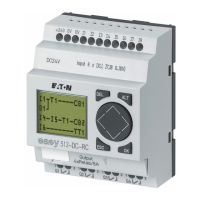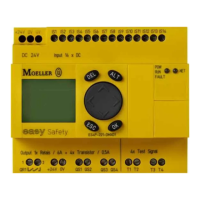6. Function blocks
6.3 UF - User function block
These numbers specify the maximum possible number for I, IA, Q, and QA. However,
the following restrictions apply:
l
The total number of inputs (bit and analog) must not exceed 12
l
The total number of outputs (bit and analog) must not exceed 12
l
A maximum of 12 bit inputs and outputs can be used
l
A maximum of 8 analog inputs and outputs can be used
Device-specific operands (ID, LE, P) and NET operands (N, NB, NW, ND, RN, SN) are
not supported for user function blocks.
Supported manufacturer function blocks:
All standard function blocks can be used in a user function block, with the exception
of function blocks that have a hardware interface or firmware reference (i.e., OT, CF,
CH, CI, PW, PO, GT, PT, SC, AL, D, DL, and ST). Function blocks BC, BT, and MR can
be used, but will only act on the user function block's local data arrays.
l
The Copy, Cut, and Paste functions are supported the same way as in the main
program. However, they can only be used between user function blocks.
l
Just like in the main program, the keyboard can be used to enter the I, Q, IA, QA,
M, MB, MW, and MD operands as contacts and coils.
l
In addition, and just like in the main program, the keyboard can be used to create
contacts and coils corresponding to the supported function blocks, inputs, and
outputs. This applies both to entering an operand completely and to changing the
index number for an operand.
l
As soon as a change is made to a user function block, the Save user function
block option in the main menu and the Save user function block button in the tool-
bar will become available.
easyE402/24 MN050009ENEaton.com
607

